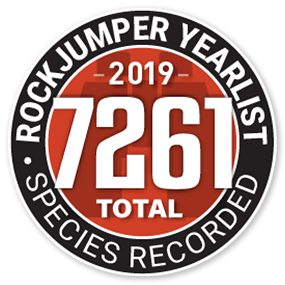Clayton was friendly, informative and fun.... Very athletic and cheerful. Find him to be a wonderful guide.
Prior to a career in birding, Clayton spent time working as a museum technician, guiding African safaris and several years working on lasers in ophthalmic surgical theatres. Clayton took a 'gap year' in his early 30's, cycling across South America on a grand birding expedition, accumulating an in-depth knowledge of the region’s birds and wildlife. These days, he spends most of his time behind a computer helping keep Rockjumper's tours flowing smoothly.
-
Clayton's passion for birds started relatively late in his mid-teens, steered initially towards science rather than listing. Weekends and the odd school week were set aside for the Durban Natural Science Museum where he conducted field research in the Lesotho Highlands and most of the KwaZulu-Natal coastal forests and wetlands. Following five years of safari guiding in southern Africa, he moved to the United Kingdom to pursue a career in ophthalmic laser surgery and other corrective techniques. However, when the occasional few weeks birding in the tropics each year became unsatisfactory, Clayton packed his bags and headed to South America. What followed was a year of birding by bicycle and motorbike covering most of the continent, during which time he was able to accumulate a very in-depth knowledge of the region’s birds and wildlife.
How did you get into birding?
When personal computers arrived in South Africa, I discovered spreadsheets – all I needed was data. Just before a family holiday to the eastern lowlands, I picked up an old photographic bird guide on the family bookshelf and found the solution to my spreadsheet problem. The need tolist things has been incurable ever since.
What led you to choose a career in tourism?
I started guiding by chance, taking a few American delegates from the 1998 IOC conference in Durban to my local patch. I was rather blown away at how happy they were at seeing what were rather common birds to me. When my family moved from Durban to a small farming town, there was no option to work at the local museum. I therefore took to safari guiding instead and even a long sabbatical was not enough to keep me from returning to the career I was unwittingly drawn to.
What are your other hobbies and interests?
Reptiles, and snakes in particular. I enjoy breaking down the barrier of fear regarding snakes as well as capturing and releasing any that find their way into built-up areas. Otherwise, I enjoy most outdoor activities. If am not guiding or birding myself, then I’ll be on a bicycle, running, throwing darts, kayaking etc. I read and write heavily and play more sport than I watch. I have a side interest in cricket statistics.
What do you enjoy most about being on tour?
Different countries and different people. Every time I get off a plane, there is a feeling of intense excitement – new experiences, new things to see, new people to meet.
What are your strengths as a tour leader?
I’ve lived and worked in several different countries and in vastly different fields. This allows me to interact easily and adapt quickly to my clients. I have a broad depth of interest and knowledge which allows me to communicate outside of birding alone. I like to be prepared well in advance of my tours, but after much experience in South America and Africa, I have also learnt to think and adapt in real time. I also don’t switch off; I have seen some great birds while waiting at airports, gas stations and border crossings.
Are you a keen bird photographer?
I’ve become dedicated over the years and carry a decent Nikon rig, a mirrorless body on a 400mm/f2.8.
Are you a lister; and if so, which lists are your main focus?
I am most definitely a lister, although I have yet to travel much further than an hour for a twitch. I keep on top of my lists, and once I converted to ebird fully, have an unbroken listing sequence that stretces well over 1000 consecutive days.
What are your future goals as a birding tour leader?
Personally, I’d like to see and/or photograph every species of antpitta! In numbers terms, I’d like to get myself over the 7 000 mark at some point and push my South America list close to 3 000.
What is your favourite place/country to guide?
South America - Argetnina, Colombia and Peru.
What is your advice to people who want to go to Colombia?
Be prepared to have your senses and body assaulted. A multitude of different habitats and climates are all in a day’s work here. A few weeks ago I left the Sierra Nevada de Santa Marta with 19 endemics + numerous near endemics all seen in less than 48 hours. While that was certainly a major highlight, the sheer volume of species can be overwhelming at times. My continuous year of Neotropical birding in Argentina, Bolivia, Peru and Ecuador was all that kept me slightly on top of the birds. Colombia is perhaps the only venue that could net over 1,000 species in a month. -
PWN, India 2013MO, Sri Lanka 2013
I hope to go again with Clayton.
Sri Lanka 2013Loved Clayton, his bird skills and all-over knowledge of everything.
SP, Sri Lanka 2013Clayton is a wonderful addition to the Rockjumper family. I look forward to being on tour with him again. He is highly skilled, friendly and aware of the participant's needs.
TT, MoroccoAs would be expected, Clayton is a skilled and amazingly knowledgeable guide, and a fun person who I enjoyed talking with. I particularly appreciated his patience and understanding in helping me deal with a personal issue that arose.

All around great fun trip, with logistics and plans for upcoming activities presented clearly and in time for proper preparation. Clayton was very prepared and we enjoyed traveling with him very much.